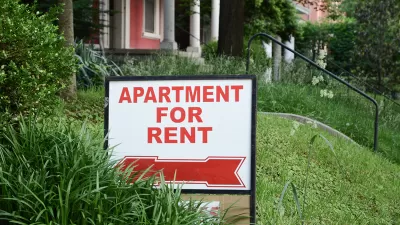There’s a reason land ownership is a matter of public record—but at the moment the records we have aren’t actually doing the job.

As we continue to grapple with the high cost of housing for renters and would-be homebuyers, knowledge of who owns properties can be a valuable tool for developing strategies to promote affordability. Much attention has been paid to the role of institutional investors in the single family housing market and the impact of COVID-19 on so-called mom and pop landlords—shorthand for non-corporate owners—and their interest in and ability to continue their businesses. Common to both storylines: an implicit recognition that who owns a property can dictate what happens to it.
Ownership scale and physical proximity of the owner’s address to his or her portfolio are important indicators of opportunities to engage on property- and local-level concerns. For those reaching out to owners to partner on preserving affordability of rental properties, for example, working with a cohort of owners or managers controlling a dozen properties each will have far more impact than working with a group of owners responsible for only one or two properties. A community concerned about a property with repeat code violations might want to know about other properties under the same owner to keep close tabs on those homes as well. And a jurisdiction’s response to violations may differ between a non-local, large-scale owner using neglect as a business strategy and an individual owner with a second property nearby that has fallen into disrepair because of cash flow problems or lack of business acumen.
Publicly accessible records of ownership are the key to being able to develop effective policies and programs. But it’s not easy. Nobody checks a box anywhere indicating a particular type of ownership, and many investors actively try to hide their activities.
Why Land Ownership Records Are Public
One of the earliest public records of land ownership is the Domesday Book, which cataloged landholding in England in 1086. While it was designed to provide William the Conqueror with an assessment of the country’s wealth in order to levy taxes, it also served to provide landowners with unimpeachable proof of their claims to their land. As land was sold, passed down, leased, subdivided, aggregated, encumbered, and otherwise transacted over time, clear chain of title open for all to see—that is, in the public record—was in the interests of individual owners and society at large. Publicly recording all of these things meant that competing claims to land could be resolved by reviewing the history, and fraud would be minimized.
The practice of public recordation in the United States is as old as the Plymouth Colony, which had its first recorded deed in 1627. Massachusetts’s 1640 law to prevent fraudulent conveyances is considered the archetype for all state recording acts. In addition to “avoyding all fraudulent conveyances,” ...
FULL STORY: Unmasking the Property Owners

Alabama: Trump Terminates Settlements for Black Communities Harmed By Raw Sewage
Trump deemed the landmark civil rights agreement “illegal DEI and environmental justice policy.”

Planetizen Federal Action Tracker
A weekly monitor of how Trump’s orders and actions are impacting planners and planning in America.

The 120 Year Old Tiny Home Villages That Sheltered San Francisco’s Earthquake Refugees
More than a century ago, San Francisco mobilized to house thousands of residents displaced by the 1906 earthquake. Could their strategy offer a model for the present?

In Both Crashes and Crime, Public Transportation is Far Safer than Driving
Contrary to popular assumptions, public transportation has far lower crash and crime rates than automobile travel. For safer communities, improve and encourage transit travel.

Report: Zoning Reforms Should Complement Nashville’s Ambitious Transit Plan
Without reform, restrictive zoning codes will limit the impact of the city’s planned transit expansion and could exclude some of the residents who depend on transit the most.

Judge Orders Release of Frozen IRA, IIJA Funding
The decision is a victory for environmental groups who charged that freezing funds for critical infrastructure and disaster response programs caused “real and irreparable harm” to communities.
Urban Design for Planners 1: Software Tools
This six-course series explores essential urban design concepts using open source software and equips planners with the tools they need to participate fully in the urban design process.
Planning for Universal Design
Learn the tools for implementing Universal Design in planning regulations.
Clanton & Associates, Inc.
Jessamine County Fiscal Court
Institute for Housing and Urban Development Studies (IHS)
City of Grandview
Harvard GSD Executive Education
Toledo-Lucas County Plan Commissions
Salt Lake City
NYU Wagner Graduate School of Public Service





























